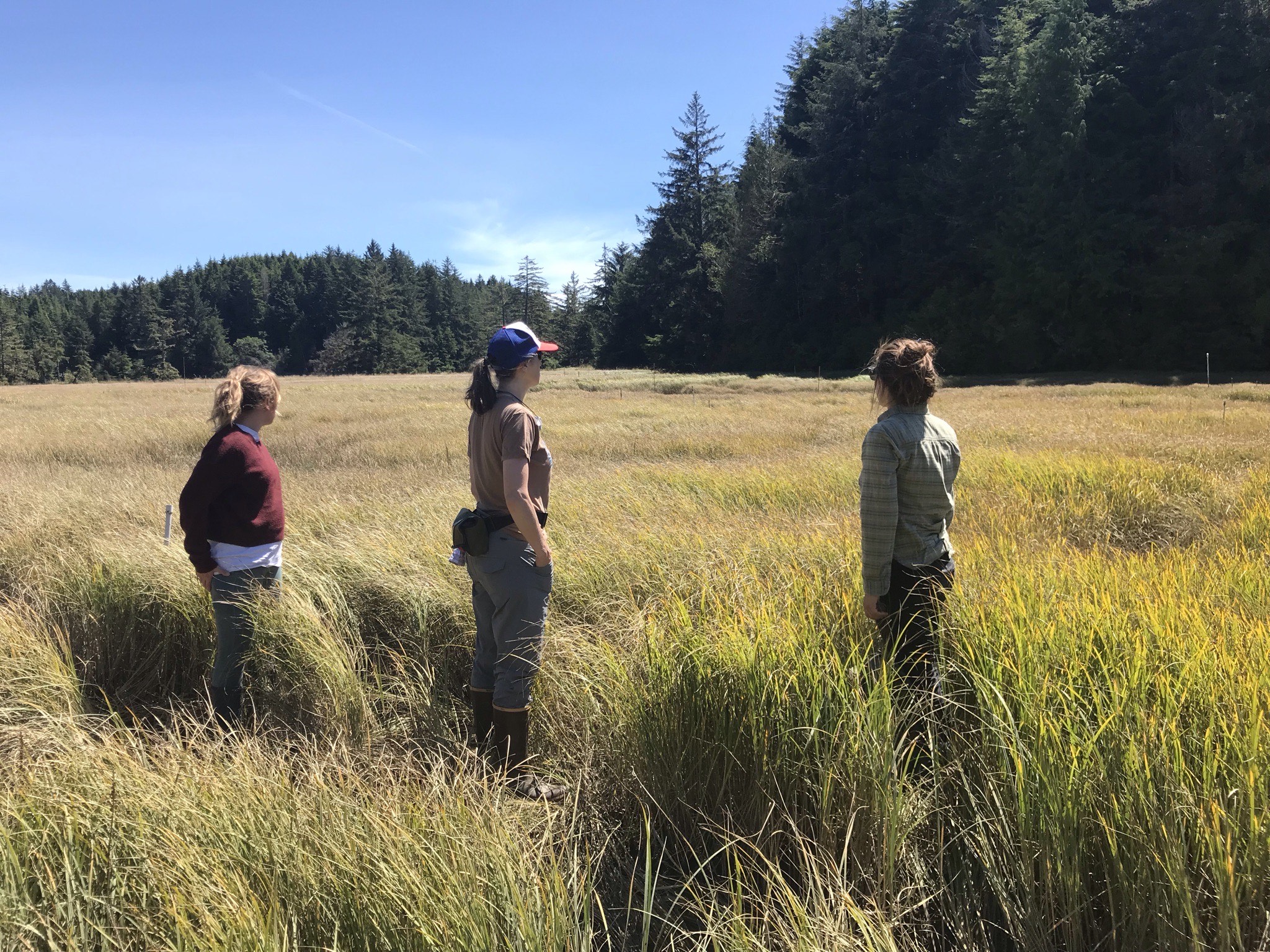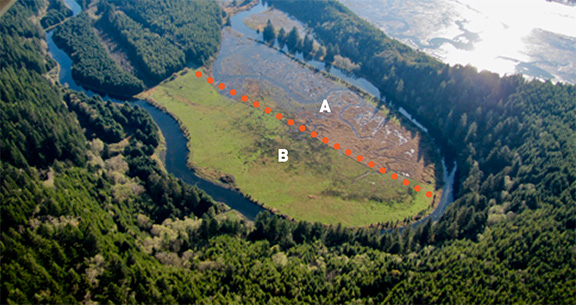
The success of a restoration project is in the eye of the beholder. Take the recently revitalized salt marsh edging Drift Creek in Alsea Bay, Oregon. To ecologists, the sight of new channels winding through bare, brown mud is a thing of beauty, heralding the abundance of life to come, from sedges and rushes to fish and shorebirds.
But, as researchers learned while speaking with people living nearby, not everyone shares this view. Some locals favored the unrestored side for its lush green vegetation and vistas of grazing elk. Resolving such differences in perception is key to local support, which can be required for project funding and permitting.
“Restoration can look unsightly at first,” said UC Davis salt marsh ecologist Julie Gonzalez. “There’s often a disconnect between scientists and other user groups, like community members and landowners, about what successful restoration actually looks like.”

In a new study, Gonzalez and colleagues gauged how various users perceived Oregon salt marshes in Alsea Bay, Yaquina Bay, and South Slough National Estuarine Research Reserve in Coos Bay. This one-year pilot wrapped up in December 2021, and the team presented their work at a May 25, 2022 webinar called Restoration Success: Linking Social and Ecological Metrics.
Besides offering habitat to a wealth of native species, salt marshes provide ecosystem services such as storing carbon, enhancing water quality, and buffering coastlines against rising seas and storm surges. But only 15% of West Coast salt marshes remain; the rest have been diked and drained for conversion to farms and housing.
The team devised social metrics for perceptions of salt marsh restoration, compared them to ecological metrics, and suggested ways to reconcile differences between the two. “We wanted to know what to highlight in communications with the public,” study lead and Portland State University environmental scientist Catherine de Rivera explained during the webinar.
The pilot results heartened the researchers. For example, focus groups that brought together ecologists and community members revealed a surprising commonality of environmental values. “They were all concerned with habitat, pollution, and sea-level rise.” said Portland State University’s Melissa Haeffner, who was social science lead on the study.
Social metrics were based partly on how the people in focus groups ranked images of high versus low ecological function. For example, participants chose between an image of the curving tidal channels found in healthy salt marshes and one of the straightened channels typical of developed coastal areas. Ecological metrics included channel sinuosity (hydrology), nonnative plant cover, and wildlife use.
A favorite moment for de Rivera came when a dairy farmer gave the lowest ranking to a photo of a cow standing in a tidal channel. An environmentalist in the same focus group was agog to discover this common ground with the farmer. “The environmentalist said, ‘What, you think that?'” she recalled. “After that, the group came together — it was a powerful experience.”
However, comparison of social and ecological metrics also revealed a divide between community members and restoration practitioners. “There were mismatches between social and management perspectives,” Gonzalez says.
Based on their findings, the team created a public-facing brochure describing restored salt marshes in a different way. While technical reports highlight metrics like hydrology and vegetation, these local people rank these on the low side. The brochure explains why these elements influence issues the public cares about, for example clarifying that sinuous channels provide habitat for fish and other wildlife, while marsh plants provide both habitat and ecosystem services.
The mix of people in the study, from those involved in the restorations to those affected by them, gives credence to the findings. Sabra Marie TallChief Comet, South Slough’s coastal training program coordinator, also credited the team with engaging a broader slice of the community, including those with “less trust of government.” That said, the researchers cautioned that the study may also have an intrinsic bias: because it was conducted during the pandemic, participants had to be willing to wear masks.
To see if their results hold up more broadly, the team wants to extend their work to other sites on the West Coast, including in Oregon, Washington state, and California National Estuarine Research Reserves in the San Francisco Bay, Elkhorn Slough, and Tijuana River. “We can do better on designing restoration projects and collecting metrics with people’s use in mind,” said de Rivera.
Top image: Researchers Gonzalez, de Rivera, and Robertson-Rojas preparing to survey a salt marsh in South Slough Reserve that was restored 25 years ago. Photo: Alice Yeates
Other Links
Restoration Success: Linking Social and Ecological Metrics